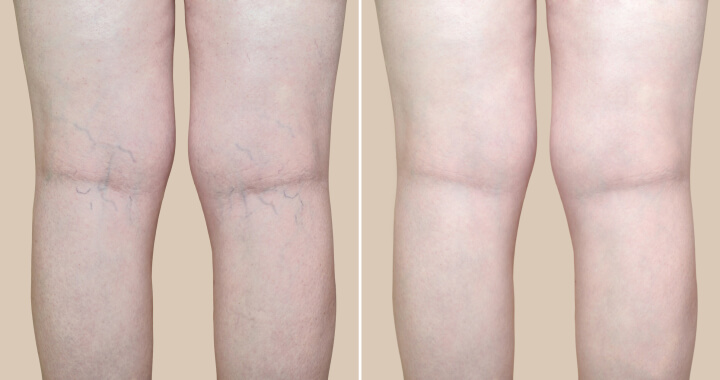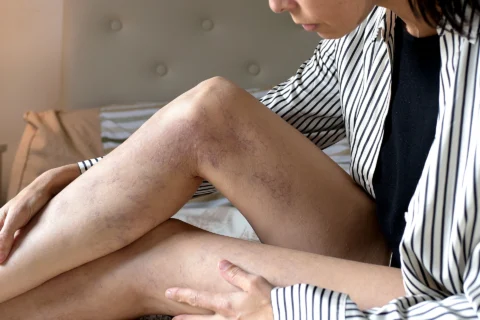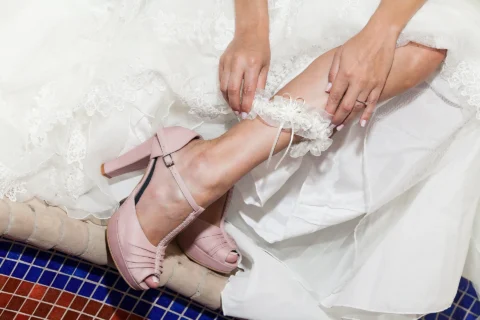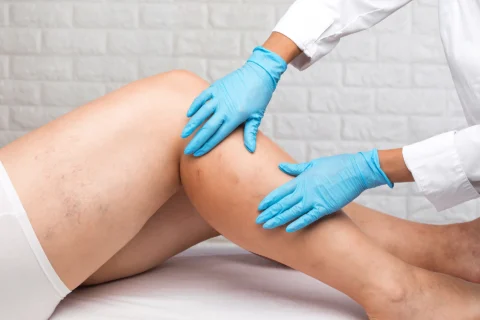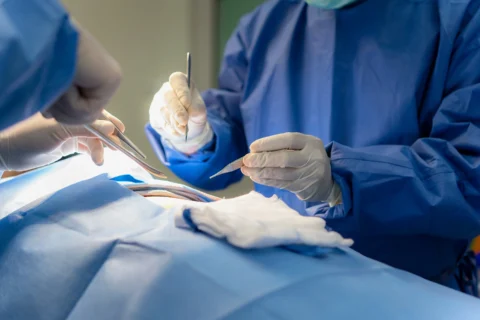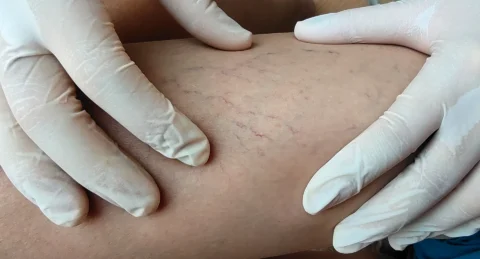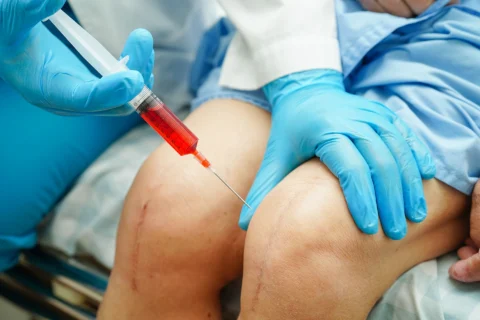One out of every three adults suffers from varicose and spider veins. A spider vein is typically seen on the calves, but it can occur anywhere on the body and is exacerbated when the blood vessel isn’t successfully transporting blood back to the heart. Varicose vein treatment options include vein surgery as well as non surgical vein treatment such as sclerotherapy.
So what are the other non surgical treatments for a varicose vein? There are several minimally invasive treatment options for varicose vein removal. These treatments are usually available in the vein specialists’ office or clinic and don’t require downtime. These few non surgical treatment options are laser therapy, radiofrequency ablation, and ultrasound guided sclerotherapy.
How Do Non-Surgical Treatments Reduce Varicose Veins?
Varicose veins are blood-filled twisted and enlarged veins which can be quite painful. They usually appear on the legs and rise above the skin’s surface. While they’re not really life-threatening, they can be intolerable. Over half of all women suffer from lower extremity venous insufficiency. The interventional radiologist clinically assesses and categorizes people with varicose veins.
Thankfully, there are treatments available for people who have painful varicose veins or want to eliminate them for cosmetic purposes. These surgeries, which are minimally invasive, can be done in-office during a single visit while still giving excellently satisfying results for most patients.
Typically, varicose veins are removed through a procedure known as “vein stripping.” This varicose vein surgery entails making tiny cuts in the skin and physically pulling the veins from the body.
New technologies have been developed to get rid of varicose veins through non-invasive or minimally invasive treatments. A non-invasive therapy is non-surgical and doesn’t use equipment and tools that slice the skin or physically enter the body. Making small incisions using a catheter is how minimally invasive treatments are conducted.
The patient will be awake throughout the process. The vascular surgeon will use ultrasound to analyze the diseased vein before cleaning and numbing the leg with a local anesthetic. When the catheter is inserted, there would be a slight pressure or stinging once the sclerosant solution is injected into the affected vein.
Wearing protective glasses during the procedure is mandated if lasers are used. Closing the treated vein, either with radiofrequency or laser, should be painless with the VNUS closure system.
After getting spider vein treatment, patients can resume their daily activities within a day or two. Post-treatment, they’ll need to wear compression stockings during the day for at least a week. Non-invasive treatments are generally effective with a low risk of side effects.
These processes usually improve the appearance of a superficial vein on the legs or other parts of the body. For the most part, there’s no scarring or bruising, but there’s a slight chance that the varicose veins will come back. Wearing compression stockings can decrease the probability of varicose veins returning.
Learn More: When to Worry About Varicose Veins
Non-Surgical Treatments for Varicose Veins

Microphlebectomy Treatment
Microphlebectomy, also classified as ambulatory phlebectomy, is another efficient minimally invasive option for eliminating a damaged leg vein. The veins are taken down through the surface of the leg using microscopic incisions. When sclerotherapy is unsuccessful, the treatment is prescribed to treat larger varicose veins and can be an alternative solution.
Sclerotherapy
It’s a treatment in which the doctor injects a compound called a sclerosant into the affected vein. The impacted vein’s walls swell, bind together, and seal closed as a reaction to the sclerosant.
Blood is routed through other veins by the circulatory system. The cured vein eventually disintegrates, and the remnants of the vein are absorbed by nearby tissue. The reticular vein gradually fades from view. The sclerosant can take the form of a liquid or foam. Since foam loads up larger veins, the doctor may use foam sclerosant to treat the reticular veins.
Endovenous Laser Treatment
One of the most generally prescribed treatments for large varicose veins is endovenous laser treatment (EVLT), also known as Endovenous Laser Ablation. It’s a cosmetic treatment for varicose veins. It can, however, be used to treat or alleviate the painful varicose veins, such as swelling, skin irritation, inflammation, or soreness.
Foam Sclerotherapy
This catheter-directed treatment involves closing a blood vessel by injecting a foam sclerosant into it. Blood reroutes through the healthy veins, preserving normal blood flow. Take note that health insurance doesn’t cover cosmetic treatments. Premiums usually cover medically necessary procedures; foam sclerotherapy may be covered if it’s not deemed cosmetic.
Saphenous Vein Ablation
This treatment, also known as endovenous ablation, includes utilizing radiofrequency to wrap off the affected vein. This vein disease is cured by using radiofrequency to heat the vein wall; scar tissue is formed due to tissue damage. Because of the heat, the vein walls disintegrate, narrow, and then shut. This practice is less invasive but equally effective as surgical treatments.
The goal of these varicose and spider vein therapies is to alleviate leg pain. They also improve the skin appearance with minimal risks and downtime. These non-invasive procedures are very effective and helpful in improving the lives of many people who suffer from varicose veins by relieving pain and improving the legs’ appearance.
Who Is Suitable for Non-Surgical Vein Treatment?
Not every varicose vein necessitates medical attention. People could try the following simple treatments in their home:
- Wearing compression stockings
- Raising the legs while sitting
- Losing weight
- Doing physical activities
A specialist may suggest non-invasive treatment if:
- Self-treatment is ineffective.
- There’s phlebitis.
- The presence of the leg becomes bothersome.
- There’s frequent formation of the blood clot.
- There has been a development of sores or ulcers.
- The fatty tissue under the skin hardens associated with blood pressure from the vein, known as lipodermatosclerosis.
Learn More: How To Prevent Varicose Veins
Know the Non-Surgical Treatment Options for Varicose Veins at The Vein Center Doctor

Varicose veins induced by venous insufficiency can trigger pain and discomfort in addition to being a cosmetic annoyance. The Vein Center Doctor is a comprehensive and full-service vein treatment facility with locations in New Jersey and New York.
Our treatment centers provide outpatient vein treatment care, from diagnosis to follow-up services, with a high success rate. We provide numerous minimally invasive to non-invasive procedures using the most advanced vein treatment innovations. Contact us today for more information.

